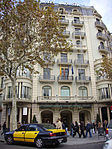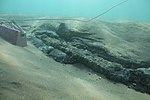Public Diplomacy Council of Catalonia
The Public Diplomacy Council of Catalonia (in Catalan language Consell de Diplomàcia Pública de Catalunya; acronym: DIPLOCAT) – previously known as the Patronat Catalunya Món – is a public-private consortium set up by the Catalan government, the Generalitat. It is devoted to promoting international awareness of Catalonia within the international community through public diplomacy tools. Albert Royo i Mariné was the secretary general of the Diplomacy Council from 14 February 2013 to October 27, 2017 when the government of Spain decided to close the consortium in application of article 155 of the Spanish Constitution. Its creation has been controversial, since the constitution reserves external action to the government of Spain exclusively. With the arrival of the new government of the Generalitat, the President Quim Torra convened the first meeting of its board of trustees since the beginning of the process of liquidation. With this announcement, the liquidation of the consortium was terminated and the process of reactivation started. In December 2018 its board of trustees appointed Ms. Laura Foraster as the new secretary general of Diplocat.
Excerpt from the Wikipedia article Public Diplomacy Council of Catalonia (License: CC BY-SA 3.0, Authors).Public Diplomacy Council of Catalonia
Carrer del Rosselló, Barcelona
Geographical coordinates (GPS) Address Phone number Nearby Places Show on map
Geographical coordinates (GPS)
| Latitude | Longitude |
|---|---|
| N 41.398 ° | E 2.1638 ° |
Address
Casa de les Punxes (Casa Terrades)
Carrer del Rosselló
08001 Barcelona
Catalonia, Spain
Open on Google Maps









